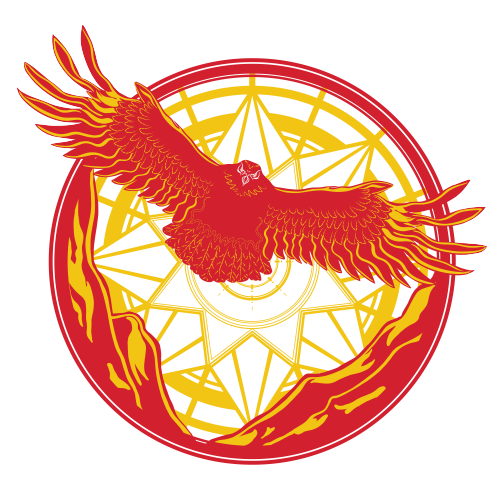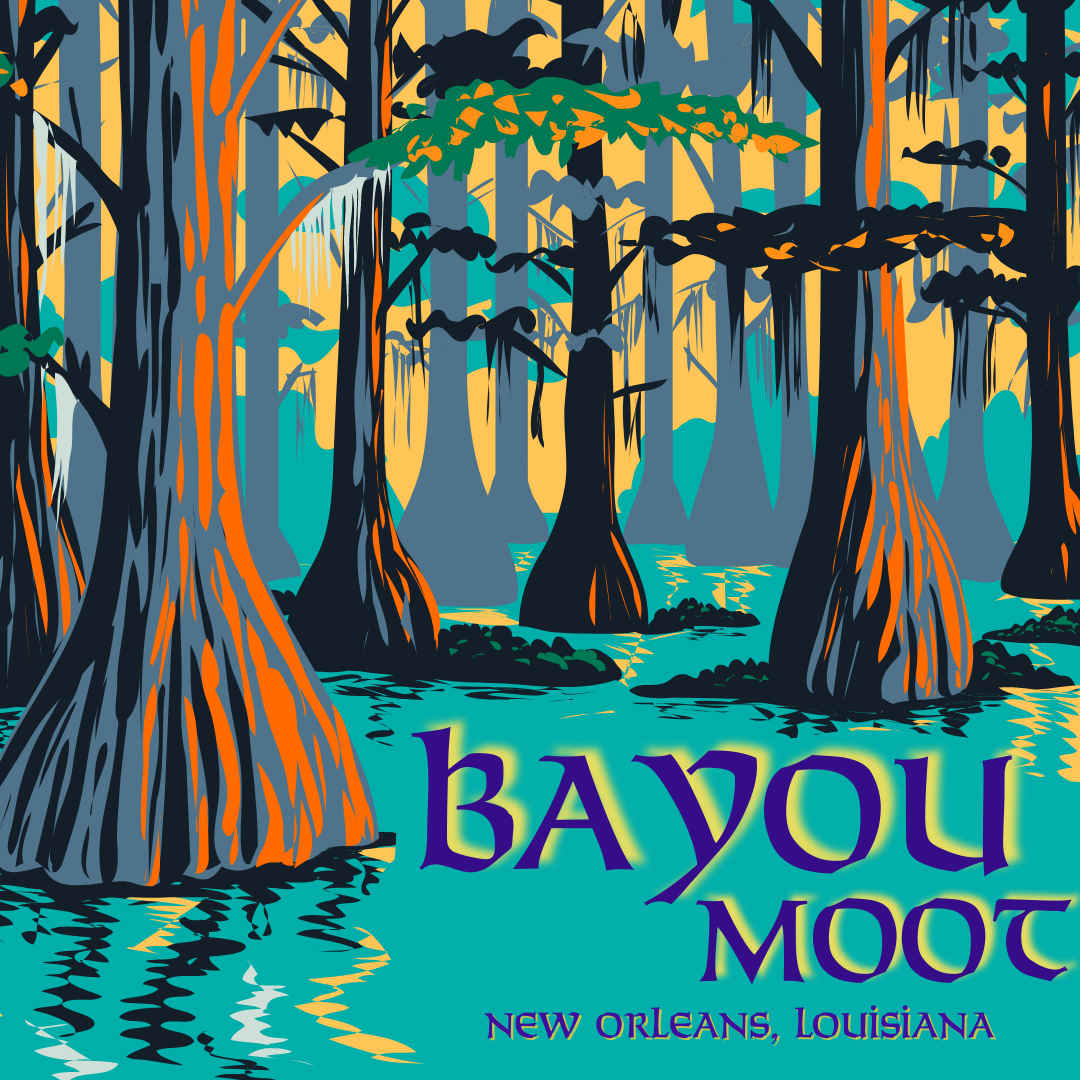Representation: The Portrayal of Women in Legends and Fantasy
What: Bayou Moot 2023
When: December 2, 2023
Where: AIA New Orleans Center for Design. Address: 1000 St Charles Ave, New Orleans, LA 70130
CLICK HERE TO REGISTER
Signum University and the Mythgard Institute invite you to join us in New Orleans on Saturday, December 2, 2023, for our first annual Bayou Moot. Our theme this year is “Representation: The Portrayal of Women in Legends and Fantasy.”
We will be considering the long traditions behind the female characters in fantasy, folklore, and science fiction, learning from the past and looking to the future as lovers of genre storytelling. From the heroines we cheer for to villains we love to hate, there is something to learn from each. Join us as we ask what makes a female character compelling, how gender does or doesn’t impact audience reach, and discuss the successes and failures of stories in their portrayal of women. We offer a warm welcome to fangirls of all kinds and look forward to a lively discussion and hearing your personal stories about the women (real and imaginary) who inspire and challenge you.
SCHEDULE OF EVENTS – (all times are local to New Orleans – Central Time Zone)
10:00 – 10:10am: Greetings and Welcome with Corey Olsen
10:10 – 10:40am: “Women in Celtic Myths and Legends” by Aurelie Bremont
J.R.R. Tolkien declared in 1955 “Celtic ‘is a magic bag, into which anything may be put, and out of which almost anything may come . . . Anything is possible in the fabulous Celtic twilight, which is not so much a twilight of the gods as of the reason.” The representation of Celtic women in fantasy is certainly a good example of those possibilities: warriors, harbingers of death, fairy princesses of elusive beauty and immense powers, head of one of the few matriarchal societies of ancient times, druidesses and witches, there’s no end to what women could supposedly do and be in Celtic times. But when it comes to Celtic myth and legends, it is important to distinguish between what historians know of ancient Celts and what was reinvented during the Celtic Revival in the 19th century.
So what were really the roles and opportunities offered to women when the Celtic model of society still existed? Was it a matriarchy? How and why did the image of the Celtic woman evolve over the centuries since? Using the theories laid out by Dumezil and applied to Celtic texts by Le Roux and Guyonvarc’h, this paper will attempt to give a clearer picture of Ancient Celtic Women and explain their long-lasting power of fascination.
10:40 – 10:50am: Aurelie Bremont Q & A
10:50 – 11:20am: “The Aes Sedai of the Eye of the World, Wheel of Time Book 1” by Starsha Kolodziej
In the lands of the Wheel of Time, a small portion of men and women can use the One Power. For men, touching the tainted male half of the Power eventually results in madness. Women who learn to channel the untainted female half of the Power through intensive training at the White Tower become Aes Sedai. We will compare what we hear from rumors and stories about Aes Sedai with the evidence we are given in Book 1.
11:20 – 11:30am: Starsha Kolodziej Q & A
11:30 – 11:40am: Ten-minute break
11:40am – 12:10pm:
11:40am – 12:10pm: “The Complex Intersectionality of Female Mages in Netflix’s The Witcher” by Kristine Larsen
Polish fantasy author Andrzej Sapkowski is best known for his internationally popular medievalist universe of The Witcher, a series of short stories and novels that spawned a best-selling set of computer games and an eponymous ongoing live-action Netflix series (2019 –). Sapkowski’s saga is known for its strong focus on racism, in the guise of speciesism, including open prejudice, intolerance, and even open animosity between sentient species such as elves and humans, a theme that is faithfully reflected in the Netflix adaptation. Unlike other forms of visual Witcher media – especially the computer games – the Netflix version has embraced diversity in its casting, despite a vociferous backlash from a segment of the fandom. However, this diversity is a double-edged sword, as a number of morally questionable characters (especially those mad mages who stand in for mad scientists in this universe) are frequently portrayed by actors of color. Therefore, while the Netflix series has openly fought against the erroneous monochromatic Middle Ages trope in fantasy through its multicultural casting, it has simultaneously teetered on the edge of well-known fantasy stereotypes identifying enemies and other unethical characters as having darker skin. This presentation also explores how the adaptation falls into other common tropes concerning sexuality, gender, and physical traits labeled as disabilities by the predominant culture, demonstrating how intersectionality codes with moral ambiguity in the Netflix series, specifically through important female mages (Yennefer, Fringilla, Phillippa, and Triss).
12:10- 12:20pm: Kristine Larsen Q & A
12:20 – 1:25pm: Bayou Moot Lunch Break
1:25 – 2:10pm: KEYNOTE PRESENTATION – “Éowyn it was, and Dernhelm also: Reading the ‘Wild Shieldmaiden’ Through a Queer Lens” by Sara Brown
The Éowyn we first meet in ‘The Two Towers’ is a woman who has been traumatised by the loss of her parents at a young age, the recent loss of her cousin Théodred, the apparent weakening of her uncle Théoden, and her inability to escape the lascivious gaze of Wormtongue. Marginalised by her gender and by social expectation, her desire to find purpose in her life as a shieldmaiden is repeatedly thwarted. Seeking to reclaim control over her life and to make her own choices, she rides out with the Rohirrim not as Éowyn, but as Dernhelm. Past scholars have usually read this as Éowyn taking on the guise of a man to achieve her desire to fight; viewed through a queer lens, however, something different is revealed. Reading her character through scholars such as Judith Butler and Jack Halberstam, I propose that Dernhelm is not a disguise at all but an intrinsic part of Éowyn: an outward projection of her masculine femininity in a non-normative expression of gender.
2:10 – 2:20pm: Sara Brown Q & A
2:20 – 2:50pm: “Representation and Beyond: How to Read and Write Feminist Stories” by Clare Moore
Legends and fantasy, from ancient civilizations to modern publications, have always included a variety of female characters and authors. Some of these works portray women better than others, but patterns have emerged over time that leave much to be desired in the representation of women in literature, especially genre fiction. Even depictions of “strong female characters” can fail to supersede the often-invisible patriarchal structures within their narratives. This session will apply a specifically feminist theoretical lens to multiple works of fantastic fiction to identify patterns within the representation of female characters and within the larger narrative structures of stories to begin to pull together a deeper vision for feminist fantasy.
Though lecture-based, this session will include interactive segments where the audience examines various female characters from legends and fantasy to identify patterns in how they are depicted. The audience and presenter will work together to analyze what those patterns convey about attitudes towards women and how these patterns embody or fail to embody feminist ideas of equality, empowerment, subjectivity, and community. The goal of this session is to provide frameworks and practice to assist readers and writers in thinking more deeply about how to read and write female characters and feminist stories in legends and fantasy.
The works analyzed will (most likely and time-dependent) include the following:
• The Lord of the Rings and The Silmarillion by J.R.R. Tolkien
• Game of Thrones by G.R.R. Martin
• Song of the Lioness by Tamora Pierce
2:50 – 3:00pm: Clare Moore Q & A
3:00 – 3:10pm: Ten-minute break
3:10 – 3:40pm: “Tolkien and Textiles: Visual Representations of Feminine Agency and Power” by Jackie Shepard
In this presentation, I will examine textile arts in the legendarium as they relate to feminine agency and power. I would first reveal evidence of Tolkien’s own attitudes toward textiles as art, specifically as symbols of power and identity. I would then discuss how textile art is used both as an iconographic and symbolic representation of women in the legendarium, particularly focusing on the characters of Arwen and Lúthien. This discussion would be situated in a critical feminist and queer theory re-examination of how a historical devaluing of textile work as “female craft” and the normative masculine view of textile work as symbolic of female restriction have affected visual representations of power and agency in female Tolkienian characters. The discussion will end by showing how applying feminist/queer lenses to textile art can reveal new understandings of the power and agency such works give to female characters in Tolkien’s legendarium.
3:40 – 3:50pm: Jackie Shepard Q & A
3:50 – 4:20pm: “What DO Women Like in Tolkien’s Legendarium, Anyway?” by Robin Anne Reid
Questions about Tolkien’s female readers (a number of male fans and critics think there are none) and about Tolkien’s female characters (if you have not read Janet Brennan Croft’s and Leslie Donovan’s Perilous and Fair: Women in the Works and Life of J.R.R. Tolkien, please do so immediately) abound. Few Tolkienist scholars (even the women ones!) think to ask women fans of Tolkien what they like. In this presentation, I will use information provided by women and non-binary and agender readers of Tolkien’s legendarium drawn from two data-sets. The first data-set consists of the responses from 55 women and 9 agender/ nonbinary/no answer participants from my “Atheists, Agnostics, and Animists” survey. The second consists of the responses from 441 women and 14 nonbinary/no answer participants from William Fliss’s The J.R.R. Tolkien Fandom Oral History Collection (data-set downloaded October 6, 2023). My presentation will focus on a key word analysis of responses to one of my original survey’s eight questions (6. What makes Tolkien’s works important to you?) and the complete transcripts of the Marquette interviews, which limited the respondents to three minutes to answer three questions: When did you first encounter the works of J. R. R. Tolkien?; Why are you a Tolkien fan?; What has he meant to you?
4:20 – 4:30pm: Robin Anne Reid Q & A
4:30 – 4:45pm: Thank Yous and Goodbyes by Corey Olsen

